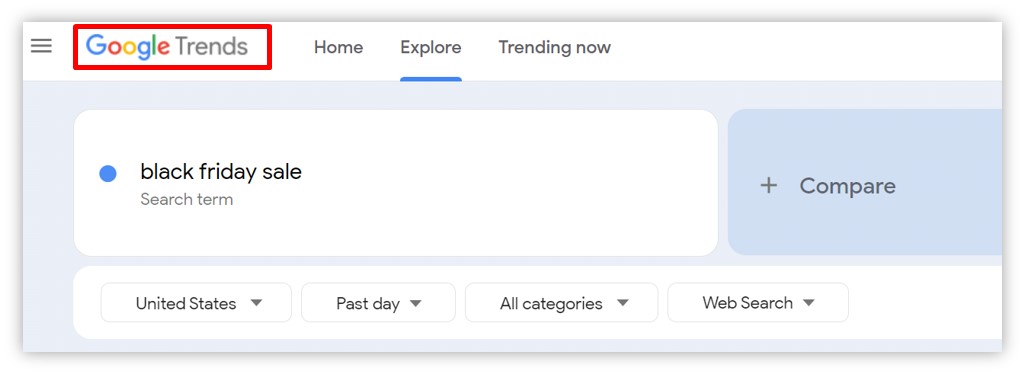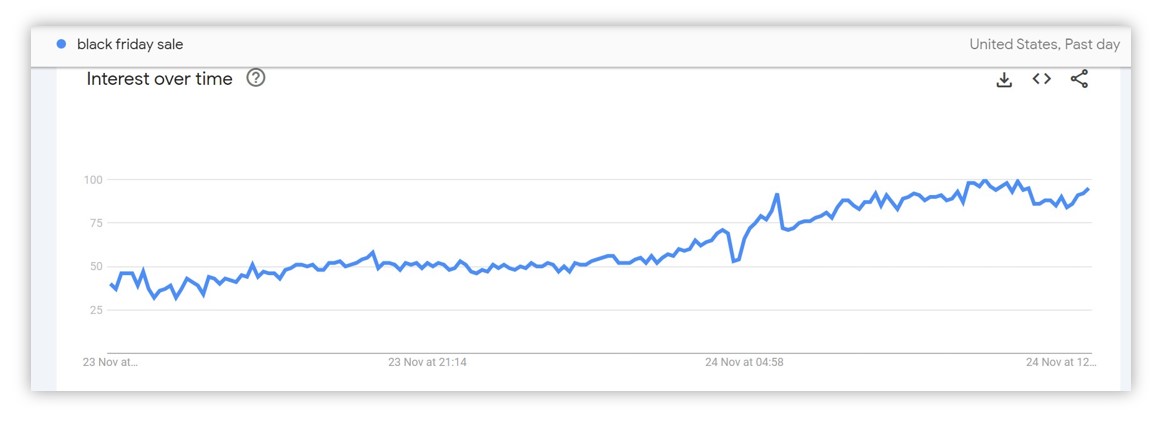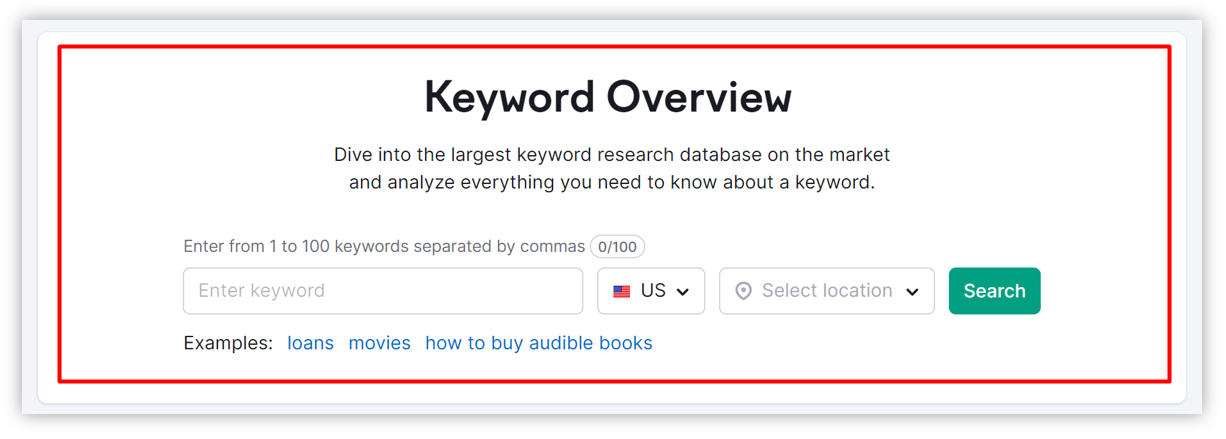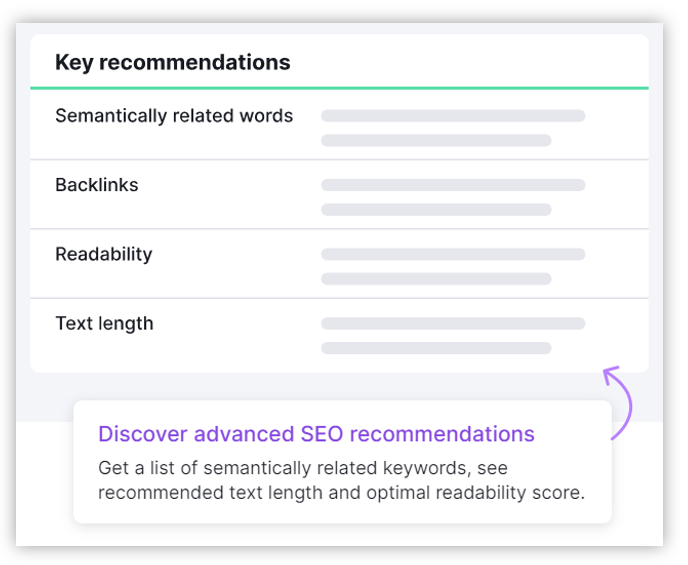The SEO trends keep evolving in the digital marketing world, and SEO marketers need to use SEO tools to achieve their marketing goals. With multiple SEO tools available, such as Google Analytics, Google Tag Manager, etc., one tool to focus on is Google Trends. Google Trends has been a useful tool for keyword research, especially when using advanced search operators that are invisible. Google Trends provides data that is based on actual search queries rather than guesses. Additionally, other functions in Google Trends help with the exact division of keyword data, which can help understand what geographic locations are best for promotional efforts and finding new & trending keywords. This blog will discuss what Google Trends is and how digital marketers can leverage it to stay ahead of competitors.
What are Google Trends?
When a user enters a keyword or search term, Google Trends provides real-time data about the users looking for the related topic. Google Trends helps an SEO specialist to customize and optimize websites. A perfect SEO agency uses Google Trends for SEO audit from time to time, thereby increasing traffic to the business. It is a free tool that provides statistics and other information regarding the popularity of specific search terms on both Google and YouTube by the consumer. Google Trends is easy to use, not only for collecting data but also for providing comparison options.
When a user enters a keyword or search term, Google Trends provides search results for specific keywords or questions that are currently popular. With Google Trends, we can see what is trending in real-time. For instance, finding out how popular a specific phone is by region or age group gives SEO consultants insight into what our users want based on location and other factors about any product or service. A business that uses Google Trends regularly maximizes its profits and focuses on getting ranked higher on the search engine result page. They can even see what topics are trending among the target audience general, which provides them with helpful knowledge of the demand for any products or services. It is one of the most effective tools to include in our digital marketing practices so we can gain an advantage over our competitors.

How to use Google Trends for SEO and content marketing?

1. Market research - According to market research, Google Trends is useful as it provides information about the most popular keywords that are searched by users. You can use Google Trends to know the popularity of your term by conducting thorough market research. Once we understand our topic’s popularity, it’s time to take an approach and investigate those search terms further. We need to identify when our specific term is trending during certain months of the year. For example, if our search term is “shirt,” this may not be too specific. We will need to define what type of shirts, which color and so on. The best way to start our research is to enter a generic topic from there, we can analyze our results.

2. Keyword research - Google Trends allows us to analyze the trending keywords in related queries and include them in our keyword list. Also, we can check the “related queries” on Google Trends. These will give you an idea of what our target user is looking for. Once we have got different keywords for our topic, we can compare up to five keywords in Google Trends. We can use + or – to further refine our search to include or exclude specific keywords. Keywords on our site can also be used by Google Trends for finding related search terms that are also growing in popularity and thus giving users the perfect keyword data analysis. Google Trends is also called the best keyword research tool by marketers as it gives them the ability to know how many people are searching for a particular phrase in real-time.

3. Local optimization - Google Trends data makes it easy to conduct SEO keyword research or PPC keyword research and track location-specific search trends of any product or service. Its features include “Keyword Planner” which provides users with real-time search volumes for specific keywords. This feature is helpful for businesses which want to do local SEO. As a business owner, we can use facts and figures on search activities to monitor, analyze, and even predict whether a product, service or new idea will be acceptable to theand thereby leading to content marketing local audience. It would pay off even further to check out “Interest by Subregion” on Google Trends. Also, we should analyze that different cities, states, and subregions will have different keyword trends. Google Trends goes through a lot of data, tracks search activity with passing time and highlights the top trending terms. Thus Google Trends serves as the best tool for businesses to optimize locally based on specific location phrases and to monitor the competitor's strategy.
4. Use of LSI keywords - Google Trends helps us track the popularity of a particular keyword or phrase in real-time. It also provides information showing where interest is rising and falling across age, gender, income, etc. Using latent semantic index keywords with the help of Google trends helps a lot in SEO. Combining related keywords or LSI in our blog posts and other types of content will increase traffic to our website while increasing conversions. This leads to more sales and leads. The more relevant keywords in our title tags, the better it is from a digital marketing point of view. We should make sure that each SEO-friendly page has a unique title tag. Use the target keyword near the beginning, but don’t make it look unnecessary. We should also remember that filling content with a lot of LSI keywords will only hurt our rankings and will lead to penalties. We should add these words or phrases with the right context and in sufficient quantity.

5. Observe related blogs and video topics - We can also use Google Trends to provide insight into related topics to consider for future content. If we look to the left of the “Related Queries” table, we will notice another table called “Related Topics”. This offers coverage of topics that users are searching for with Google Trends and unveiling related search queries. It can help us see if users are searching for specific topics and whether they are increasing or declining over time. Also, we can bring down those results by “Trend” (which lists searches that are on the rise), and “Related Topics” (for a broader perspective). In other words, discovering phrases or keywords in related blogs and videos that are very popular using Google Trends is useful for anticipating the creation of content in the future. You can also avail of content marketing services and get in touch with the content specialists to wite engaging content based on these trends.
6. Helps to build a content calendar - You have to know which is the best time to post our content, as it is as important in writing great content to grab users attention. This is because even the best-created content will fail to lure the required user's engagement or attention if posted without a proper strategy. For instance, photos posted on Instagram at certain hours of the day seem to have more reach than those posted randomly. However, it is difficult to know the right time for posting without any proper tools. Using Google Trends can solve the problem for us and help us develop a content calendar in our content marketing strategy. In Our content, especially seasonal content, is important to our content marketing practices in the SEO plan and strategy. Google Trends can help with this. This works well for e-commerce businesses or consumer goods businesses in which there is a seasonal increase in demand during festivals or holidays. Let's say, for example if we own a shop of flowers and see that the demand for roses increases before Valentine's Day, when should you start creating content around this? A week before Valentine’s Day? A month before? So here we are looking at Google search trends for ‘roses for Valentine’s day’, and we see that the search rises every year around December to January. Now we know when to start, gather ideas, knowledge, information about keywords, and so on. Once we have found out these seasonal trends and decided when to start a particular content piece, we can just add them to our workspace content calendar, so that we don’t forget when the time is near. Thus, Google Trends can be a valuable contribution to our content planning tools.
7. Perform competitor research - With the use of Google Trends a business can conduct competitor research .Though this tool does not provide any data about traffic or customer engagement on our competitor’s site, it can still give us some valuable input. For example, we can observe keyword popularity for the keywords and phrases that our competitors are using. For this, we have to look at the competitor links on the SEO content briefly. These are sites that have published content around the same topic as ours and we aim to outrank them. So visit some of these links and identify the relevant keywords they have used. Then generate a SEO report for these search terms at the same time. We can also run a comparison for different keywords and see which one would be most fruitful to our content marketing, PPC and SEO strategy. Pick the keywords with the highest search interest to include in our content. we can look at the related queries too and see if our competitor has addressed them in their content. If not, we can include these in our content. We can also compare the popularity of our competitor brand names with our own. So, Google Trends is very useful for having competitor research analysis for optimizing content and its marketing.
8. Seasonal trends - With Google Trends, you can also check the seasonal importance of topics and put in line with content marketing strategy. For example, it makes no sense to write on Valentine's Day before Thanksgiving. With Google Trends you can identify not only such seasonal trends but can also discover less popular trends over the year. Seasonal trends are of great significance in sectors like hospitality, travel, along with e-commerce. Using Google Trends, you can better understand which product or service sees an increase in popularity during a particular season. You can also see the months with the most chances of the product receiving greater attention. This information can then be taken to have a broader understanding of the target user thereby optimizing content and SEO.
9. Brand monitoring - With Google Trends you can measure your brand’s importance against the competition with it to identify if we should invest more in branding. If a business is growing, we can check how our brand name is performing through Google Trends. For example, you searched for “Outgrow” on Google Trends. Now, outgrow is a general word that can be searched for other reasons too, so the graph looks very good. But to see whether it is performing for us or not, you can check the related queries section and can see that on the top. Also, note that if our brand name is not performing well as per Google Trends, we can start creating more branded content. This will help us rank better on search engine results pages and help to drive more traffic.
10. Product innovation and planning - Google trends can be used in product innovation and planning in the following ways:
a. Find product opportunities - One way of using Google Trends is to generate product ideas that is to explore the trending topics and queries that are related to our niche. You can filter by category, country, time range, and type of search for example web, image, news, etc to find out what is gaining or losing popularity among the target audience. You can also compare different terms or topics to see how they rank against each other in the market.
b. Testing assumptions - Another way to use Google Trends is to explore product opportunities is to test your assumptions about the target audience, their needs, and their behavior. You can use Google Trends to check if the product idea is solving a real problem, if there is enough demand for it, and if it is in line with the recent market trends. For instance, if you are developing a travel app, we can use Google Trends to see if people are searching for travel-related terms, how COVID has affected their travel plans, and what destinations or activities they are interested in.
c. Refine your product strategy - A third way to use Google Trends to improve our product strategy according to SEO trends is to monitor the performance and feedback of our product and our competitors. You can use Google Trends to track how our product name, features, or keywords are performing with time, how they compare to our competitors, and how they are determined by external factors such as events, seasons, or news. Google Trends is a powerful tool that can help us by providing valuable insights into the market and customer behaviour.
Conclusion
Google Trends is a wonderful tool in SEO and content marketing as it provides data and figures based on real-time trends. With Google Trends one can outsource SEO services to an offshore digital marketing company as well. Google Trends is a free tool and has multiple benefits in optimizing content for SEO. The best part of this tool is it's easy to use so anybody who wishes to start a business as a digital marketer must make use of Google Trends for expanding business and increasing traffic. We can discover countless ways to gain more keyword search volume insights by exploring different Google Trends menus and options. Google Trends is a mind-blowing tool for SEO in content planning and thereby promoting content marketing. You can also avail of white-label SEO services from a digital marketing company easily if we have proper knowledge of the tool - Google Trends. In this blog, we will deal with what is google trends and how it can be used for SEO and content marketing. By hiring our internet marketing experts you can take advantage of various other services like HVAC SEO, flooring SEO, roofing SEO, small business SEO, appliance repair SEO and much more. All these services can enhance your website traffic and growth of your business.
References:
. Google Trends: How to use it for SEO & content marketing
. 7 Uses for Google Trends in SEO and content marketing
